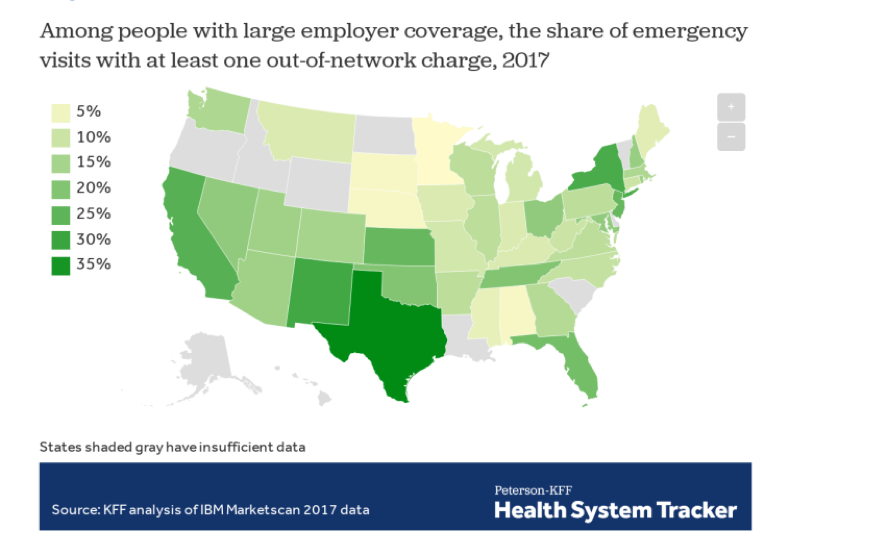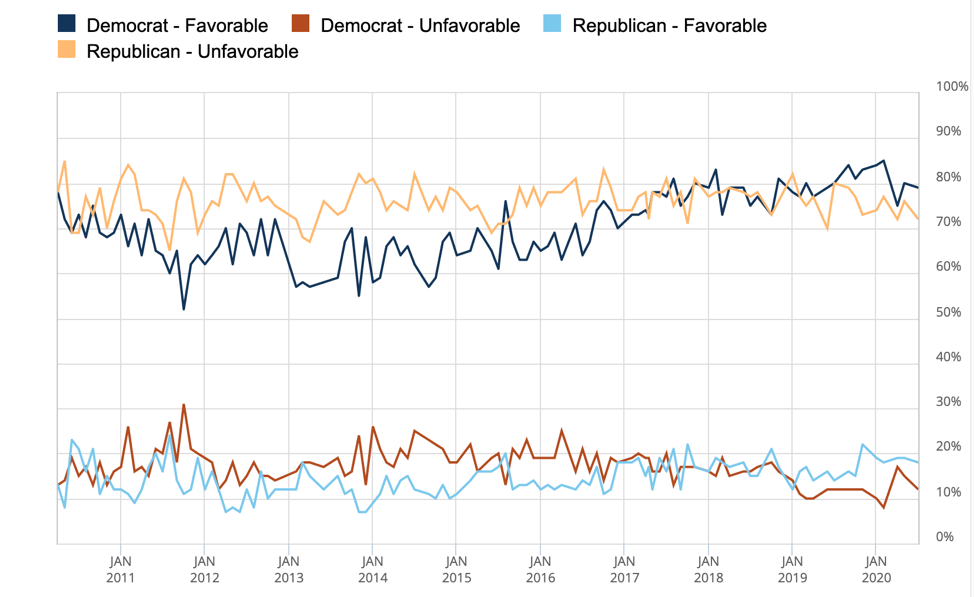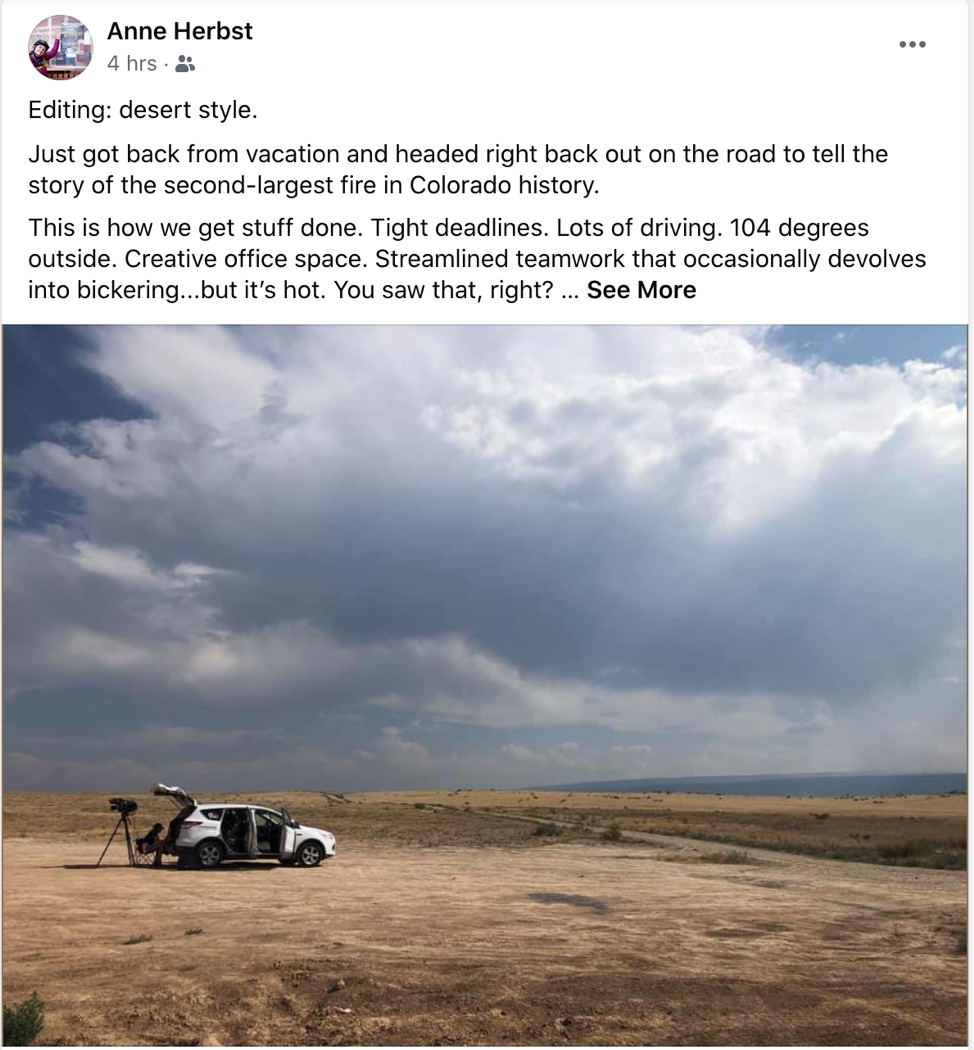 Covering COVID-19 is a daily Poynter briefing of story ideas about the coronavirus and other timely topics for journalists, written by senior faculty Al Tompkins. Sign up here to have it delivered to your inbox every weekday morning.
Covering COVID-19 is a daily Poynter briefing of story ideas about the coronavirus and other timely topics for journalists, written by senior faculty Al Tompkins. Sign up here to have it delivered to your inbox every weekday morning.
You might think that a pandemic would be just the time to talk about our health care system. In today’s second item, I will explore where we are with reforming the Affordable Care Act (hint: plenty of talk but no action). But one area of health care reform is actually gaining some traction.
One of the more interesting parts of Democratic presidential nominee Joe Biden’s proposed health care reform plan involves “surprise billing.” Anybody who has been hit by this tactic knows what it means. It is when you go to the hospital and even though the hospital is in your insurance coverage plan, the individual doctor who is treating you (who you did not choose) is not in the network, so you get smacked with a huge bill that your insurance won’t cover.
Biden said he wants to change that to forbid providers from charging out-of-network rates when patients have no control over who treats them. And Health and Human Services Secretary Alex Azar is pushing Congress to act on surprise billing. President Donald Trump signed an executive order to prevent surprise billing for COVID-19 patients, but it is up to Congress to take it further than that and, as Azar said, it is time.
This is a terrific issue for journalists to explore because it involves people’s health and money. Having been a victim of this myself, I was surprised by how many people I talked with who have experienced it, too. My friend, KUSA journalist Chris Vanderveen, has reported extensively on surprise billing. NPR has reported on it, as well.
How often does it happen? We do not know for sure, but one way to look at it is to see what the experience is among people who work for big employers.
The Kaiser Family Foundation found that in some states, like Texas and New York, a third of people working for big employers had experienced surprise medical bills. A fourth of people working for big employers in California, Florida and Tennessee experienced them, too. Just think about how many electoral votes there are in those five states combined. If for no other reason, that makes this a hot topic for candidates.

(From the Peterson Center on Healthcare and Kaiser Family Foundation)
KFF found that the rate of out-of-network charges ranged from 2% of in-network inpatient stays in South Dakota, Nebraska and Minnesota, to around a quarter or more in New York (33%), New Jersey (29%), Texas (27%) and Florida (24%). Inpatient stays in urban areas (16%) were somewhat more likely to result in at least one out-of-network charge than stays in rural areas (11%).
If you really want to see where surprise medical billing involves big bucks, look at air-ambulance bills. The Government Accountability Office said:
In emergency situations, air ambulance service surprise bills are especially concerning. Air ambulance service, whether by fixed wing aircraft or helicopter, is expensive. A 2019 study by the Government Accountability Office found that in 2017, the median price charged by air ambulance providers was approximately $36,400 for a helicopter transport and $40,600 for a fixed-wing transport, an increase of over 60 percent from 2012. The GAO found that 69 percent of air ambulance transports of privately insured patients were out-of-network.
Even when it is not an emergency, and even if it is a scheduled service, you can still get stung by an out-of-network doctor. A Health and Human Services report a few weeks ago found:
(Another) surprise billing scenario involves a scheduled procedure in which the facility is in the insured person’s network, but one or more of the providers delivering care, such as an anesthesiologist or pathologist, are not. People may have performed due diligence in selecting an in-network provider only to have the unpleasant surprise of an unexpected, often large, bill due to ancillary out-of-network providers involved in the person’s care.
One of the most interesting examinations of surprise billings comes from Vox. The terrific health reporter Sarah Kliff examined 1,182 emergency room bills from all 50 states. In addition to absurdly high prices for some services, she found surprise billing for out-of-network doctors. In one case, a patient was billed $7,924 by a doctor who dropped the charge once Kliff started asking questions.
So where are we with health care reform?
You may have wondered what happened to what was, as recently as January, one of the biggest issues in the 2020 election: health care reform.
The Republican National Convention managed to run for four nights without either the president or vice president mentioning Obamacare or the Affordable Care Act. For more than three years, President Trump has promised a “terrific,” “phenomenal” and “fantastic” plan. But, to date, this is as much detail as he has offered. Two of the pillars include:
- Allowing individuals to fully deduct health insurance premium payments from their tax returns under the current tax system.
- Requiring price transparency from all health care providers, especially doctors and health care organizations like clinics and hospitals. Individuals should be able to shop to find the best prices for procedures, exams or any other medical-related procedure.
A New York Times calculation found that the word “Obamacare” came up 23 times in the 2012 GOP convention and 13 times in the 2016 convention. It was mentioned just one time in this convention — by Natalie Harp, a cancer survivor.
The Kaiser Family Foundation has tracked how people feel about the Affordable Care Act for years. KFF asked, “As you may know, a health reform bill was signed into law in 2010. Given what you know about the health reform law, do you have a generally favorable or generally unfavorable opinion of it?”

(From the Kaiser Family Foundation)
Over time, those who identify as Democrats have come to like it more than when it was enacted. Republicans dislike it a little less than they once did. In general, Republicans dislike it about as much as Democrats like it.
Biden talked about health care changes in his address during the Democratic National Convention and has, for months, been shaping a plan that he says would allow individuals to buy into a health care plan that would look like Medicare, or keep a private plan. Biden also says his plan will lower the cost of the government plan so “no family buying insurance on the individual marketplace, regardless of income, will have to spend more than 8.5% of their income on health insurance.”
[the_ad id=”667826″]
Are valved masks good or bad? The CDC offers confusing guidance
The Centers for Disease Control and Prevention recently told us not to wear face masks that have plastic valves sewn into the fabric. Those valves open a little when you exhale and close when you inhale, which means for those of us who wear glasses the masks don’t steam up our lenses.
But the CDC determined that the valved masks were not as effective at protecting others from the coronavirus as masks without valves. Sounds simple enough.
Except Frederick Clarkson reports for Salon that the CDC made the recommendation without any data. And the CDC mentions a lot of models of valved masks that it says are fine for medical use. Clarkson reported:
The CDC’s website features a database that includes more than 600 models of valved facemasks recommended for health care settings.
Moreover, the agency admits that it updated the policy without any new data. Peculiarly, the new CDC guidance in early August aligns with a Delta Airline company policy issued in July. Like the CDC guidance update that followed, Delta’s earlier policy rejects valved N95 respirators while accepting the wearing of bandannas and neck gaiters — which offer far less protection to the wearer and to those around them.
There are some studies about valved masks — like this one from Duke University, which uses observation and not data — that found they could release virus particles. Duke’s study said:
Furthermore, the performance of the valved N95 mask is likely affected by the exhalation valve, which opens for strong outwards airflow. While the valve does not compromise the protection of the wearer, it can decrease protection of persons surrounding the wearer. In comparison, the performance of the fitted, non-valved N95 mask was far superior.
3M, a key manufacturer of N95 masks, said it knows of no studies with data that show valved masks are less effective than other masks. The Salon story made this observation:
Concern about dangerous leakage in valved masks is unfounded in both directions –– both inflow and outflow. Indeed, the CDC website still advises health care workers to select from a NIOSH-approved list of N95 respirators “to help protect themselves from diseases potentially spread through the air, such as SARS or Tuberculosis.” The list sorts thousands of models alphabetically by brand name and model and specifies which ones contain an exhalation valve. By Salon’s count, CDC currently recommends 624 models of valved N95 respirators. For example, the list includes the kind of N95 respirators made by 3M and sold in hardware stores as dust masks. Of the 54 3M models that the CDC recommends to health care workers, after a review from NIOSH, 17 of these feature valves.
Most of us just accepted the CDC’s decree as an authoritative view. For journalists, there seems to be a central lesson in this story. When an agency, including the CDC, says not to wear valved masks, ask questions like, “What data are you using as the basis for this recommendation?”
A granular look at how to reform remote learning
Bravo to Fast Company for a smart package of stories on what has gone well and what has gone wrong with remote learning in a pandemic.
The deep dive by Julia Herbst includes:
- The U.S. education system is in crisis. Now’s the time to reinvent it – The problem of how to educate the country’s more than 73 million children during the pandemic has given us a once-in-a-generation opportunity to make schools more equitable.
- Remote learning exacerbates inequality. Here’s how we must support the most vulnerable kids – Without a radical reimagining, this school year is set to multiply already gaping disparities.
- Remote learning doesn’t have to be awful. Here’s what actually works – As more and more schools go remote, getting digital learning right is imperative. Fast Company explores what teachers and remote learning experts say they know works and what they’re planning for the coming school year.
- ‘I don’t know how to do this’: 3 families on the trials of virtual learning – The U.S. education system is not created equal — especially during the coronavirus pandemic. See how different families from across the country are dealing with remote school, infection risk, and how they’re managing work during lockdown.
- Our students can’t wait any longer. We must bring the internet to everyone – What will it take to provide broadband to all families.
There is a lot to chew on here. You will come away with many ideas that are worthy of your local examination.
Mink farms are infected with COVID-19

Minks look out of a cage at a fur farm in the village of Litusovo, northeast of Minsk, Belarus. (AP Photo/Sergei Grits, File)
This item is less about the mink farm industry and more about helping us understand how the coronavirus keeps moving from species to species. We have noted the virus in cats (including tigers), dogs, bats and now, mink. Oh, and humans, of course.
A couple of months ago, I noticed some stories from the Netherlands about COVID-19 cases showing up at mink farms. Farmers there have killed a million mink as precautions. Now, COVID-19 is showing up in American mink-raising operations.
American mink farms in 22 states produce about 2.5 million mink pelts a year. (I had no idea the fur industry was still that robust, did you?) Utah is the biggest mink-farming state. Oregon, Idaho and Wisconsin also raise a lot of mink. (See Fur Commission USA data here.)
The mink cases have “big implications … and (are) worthy of everyone’s attention,” says Dean Taylor, Utah’s state veterinarian. One issue is that U.S. mink farmers will now have to be on the lookout for the virus, which can spread rapidly. (As of July 30, 27 farms in the Netherlands had confirmed infections.) There are at least 245 mink farms in 22 states, according to Fur Commission USA, the nation’s largest association of mink farmers. More than three dozen farms operate in Utah, according to Clayton Beckstead, northeastern regional manager of the Utah Farm Bureau Federation.
“The threat to the livelihoods of those who farm the mink is very real,” Baldwin says, in large part because farms may be required to eradicate infected animals. In the Netherlands, farmers had killed more than 1 million mink as of Aug. 2. U.S. farms churn out more than 2.5 million pelts annually, according to USDA. Utah is the country’s second highest producer, processing more than 550,000 pelts annually.
What we don’t know is how likely it is for the virus to move from the animal to the farmer. In fact, the U.S. Department of Agriculture said it is not sure if humans even gave the virus to the mink. All of this underscores how little we know and how much we need to learn about this virus.
[the_ad id=”667872″]
The way we work now
I leave you today with a post from my friend, Denver-based KUSA’s director of visual journalism (we used to call this position chief photographer) Anne Herbst.

(Screenshot, Facebook)
We’ll be back tomorrow with a new edition of Covering COVID-19. Sign up here to get it delivered right to your inbox.
[the_ad id=”667878″]
Al Tompkins is senior faculty at Poynter. He can be reached at atompkins@poynter.org or on Twitter, @atompkins.







